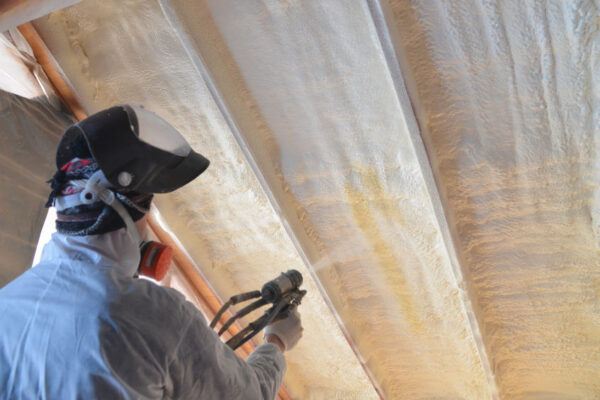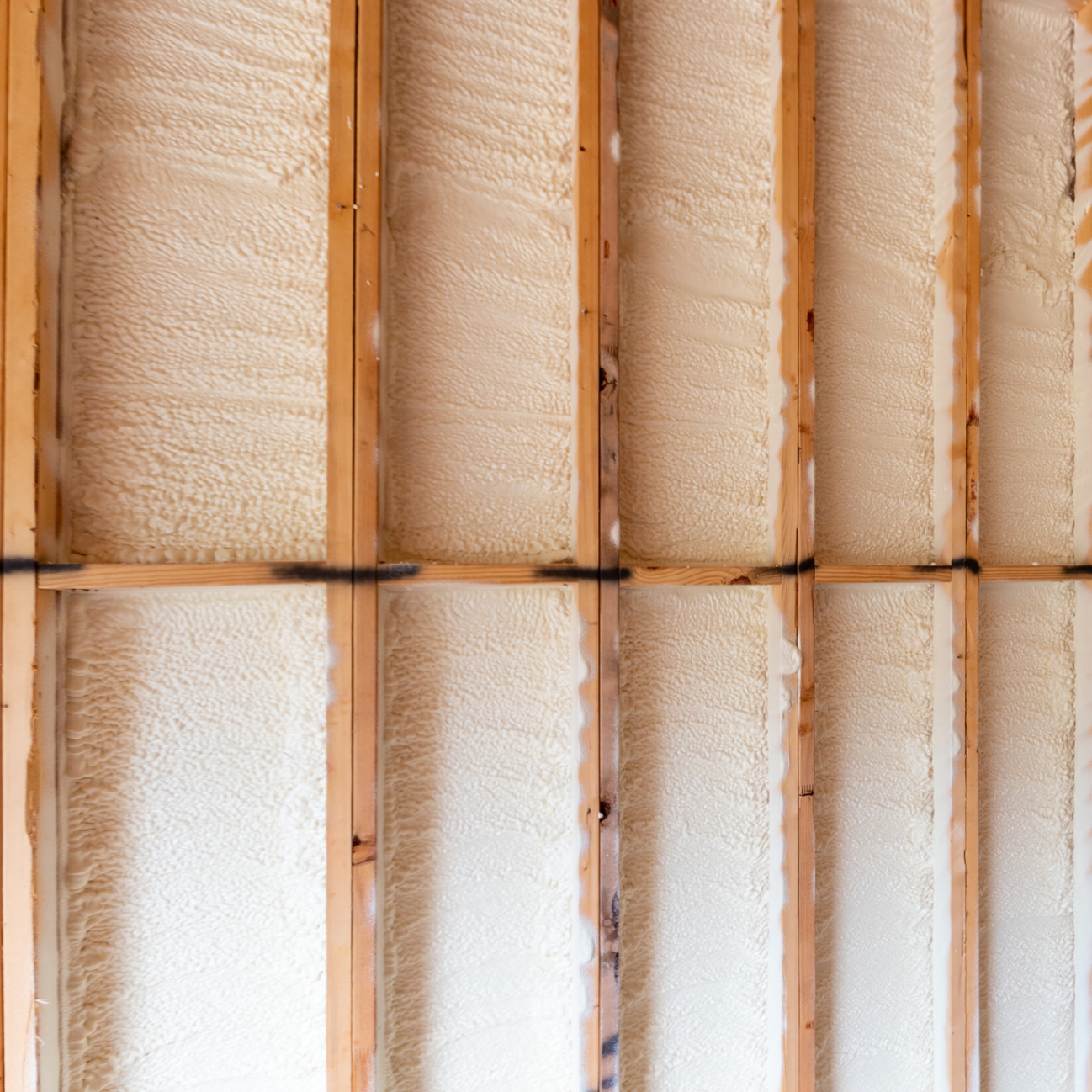The Environmental Impact of Spray Foam: Sustainability Factors To Consider
The Environmental Impact of Spray Foam: Sustainability Factors To Consider
Blog Article
Spray Foam: The Ultimate Remedy for Air Sealing and Insulation
Spray foam insulation has actually become a leading solution for reliable air securing and thermal insulation, providing a special mix of residential or commercial properties that set it apart from typical methods. Its capability to broaden and fill up gaps makes it especially reliable in stopping air leakage, which can dramatically impact energy efficiency. However, recognizing the complete range of its advantages, installment procedures, and contrasts with other insulation kinds is crucial for making educated decisions. As we check out these elements, the ramifications for both brand-new building and constructions and retrofits end up being increasingly considerable. What variables should affect your choice?
What Is Spray Foam?
Spray foam is a flexible insulation product that incorporates the concepts of air sealing and thermal resistance to improve power efficiency in buildings. Made up primarily of polyurethane or various other comparable compounds, spray foam is applied as a liquid that increases upon contact with surface areas, producing a strong, continual layer of insulation. This one-of-a-kind property allows it to fill up voids, splits, and gaps that traditional insulation materials might forget, giving a remarkable air seal.
There are 2 main sorts of spray foam: open-cell and closed-cell. Open-cell spray foam is lighter and extra adaptable, providing superb sound absorption and a lower R-value per inch - Spray Foam. In contrast, closed-cell spray foam is denser, giving a higher R-value, dampness resistance, and included architectural stability to building components
The application procedure normally involves specialized tools, making sure a smooth application that complies with different substratums, including timber, steel, and concrete. This adaptability makes spray foam suitable for both brand-new building and constructions and retrofitting existing structures. Its ability to develop an impermeable barrier considerably adds to decreasing energy usage and improving interior air top quality, thereby making it a recommended choice among house owners and contractors alike.
Benefits of Spray Foam Insulation
Among the most substantial benefits of spray foam insulation is its outstanding capacity to create a continual air obstacle, which effectively minimizes power loss. Unlike traditional insulation products, spray foam broadens to fill up fractures and voids, making sure that air leakage is considerably minimized. This characteristic not only improves energy efficiency however likewise leads to decrease energy expenses with time.
Furthermore, spray foam insulation offers premium thermal resistance, contributing to a more steady indoor setting. Its high R-value per inch enables effective insulation in restricted spaces, making it perfect for attics, walls, and crawl spaces. In addition, the moisture-resistant properties of spray foam help avoid mold and mold development, advertising healthier living conditions.
Another important benefit of spray foam insulation is its sound-dampening high qualities (Spray Foam). It successfully reduces noise transmission between areas, developing a quieter and more comfortable home setting. The longevity of spray foam also attracts attention, as it does not sag or resolve in time, keeping its efficiency throughout its life-span
How Spray Foam Functions
Recognizing just how spray foam insulation works is important for appreciating its efficiency in air securing and thermal resistance. Spray foam insulation contains two primary components: isocyanate and polyol material. When these parts are mixed, they go through a chemical response that triggers the product to broaden rapidly, producing a dense foam that fills up fractures, cavities, and spaces.
As the foam broadens, it sticks to surface areas, creating an impermeable seal that significantly decreases air seepage. This particular makes spray foam insulation very reliable at stopping drafts and wetness infiltration, which can bring about energy click site loss and damage over time. Furthermore, the closed-cell variant of spray foam uses premium thermal resistance as a result of its inflexible framework, properly lessening warmth transfer.
The special homes of spray foam permit it to adapt irregular surface areas, making certain detailed coverage and a smooth obstacle. Because of this, spray foam insulation not only improves energy effectiveness however also contributes to enhanced interior air high quality by reducing the accumulation of contaminants and irritants. Inevitably, recognizing the mechanics behind spray foam underscores its role as a remarkable option for insulation and air securing in both household and business applications.
Setup Refine Introduction

Prior to installation, the space needs to be effectively cleaned and prepped, ensuring that surface areas are devoid of moisture, dust, and debris. Since pollutants can jeopardize bond and total efficiency, this action is vital. Once the area is prepared, the application involves mixing the 2 components of the spray foam, which broadens upon get in touch with and loads voids properly.
Educated specialists ought to perform the installation, using specific devices to guarantee uniform insurance coverage and optimal density. Security preventative measures, including putting on protective equipment and guaranteeing appropriate air flow, are critical during this procedure. After application, the foam usually cures quickly, forming a strong obstacle that enhances energy performance.
Contrasting Spray Foam to Traditional Insulation
When reviewing insulation alternatives, spray foam insulation attracts attention in contrast to site link traditional materials such as fiberglass and cellulose. One of the primary advantages of spray foam is its premium air sealing capacities. Unlike fiberglass and cellulose, which can enable air seepage, spray foam increases upon application, filling up holes and gaps description to create an airtight seal. This leads to improved energy performance, as much less heated or cooled air gets away the home, resulting in reduced energy costs.
Additionally, spray foam gives a higher R-value per inch than traditional insulation types, providing more efficient thermal resistance in a thinner profile. This particular is particularly helpful in rooms with minimal cavity deepness. Moreover, spray foam is resistant to wetness and mold growth, which can be a substantial interest in cellulose and fiberglass, particularly in damp atmospheres.
Nevertheless, spray foam insulation typically carries a greater in advance expense than its traditional equivalents. Home owners must weigh this preliminary financial investment versus lasting power financial savings and performance benefits. Ultimately, while both insulation types serve their purpose, spray foam emerges as a much more innovative solution for modern insulation needs, especially in regards to air securing and thermal performance.

Conclusion
In recap, spray foam insulation represents an extremely effective option for attaining optimum air securing and thermal resistance. Its unique residential properties, consisting of wetness resistance and noise dampening, make it appropriate for numerous applications in both new building and constructions and retrofitting tasks (Spray Foam). The initial prices might be greater contrasted to traditional insulation products, the long-lasting benefits, such as considerable energy cost savings and enhanced indoor air top quality, warrant the investment and underscore its worth in contemporary building practices.
Spray foam insulation has emerged as a leading service for reliable air securing and thermal insulation, using an one-of-a-kind combination of buildings that set it apart from standard approaches.Spray foam is a flexible insulation product that integrates the principles of air sealing and thermal resistance to boost energy efficiency in structures.When examining insulation choices, spray foam insulation stands out in comparison to standard products such as fiberglass and cellulose. Inevitably, while both insulation types offer their objective, spray foam emerges as a more advanced option for modern insulation requirements, particularly in terms of air sealing and thermal efficiency.
In summary, spray foam insulation stands for an extremely effective service for achieving optimal air sealing and thermal resistance.
Report this page